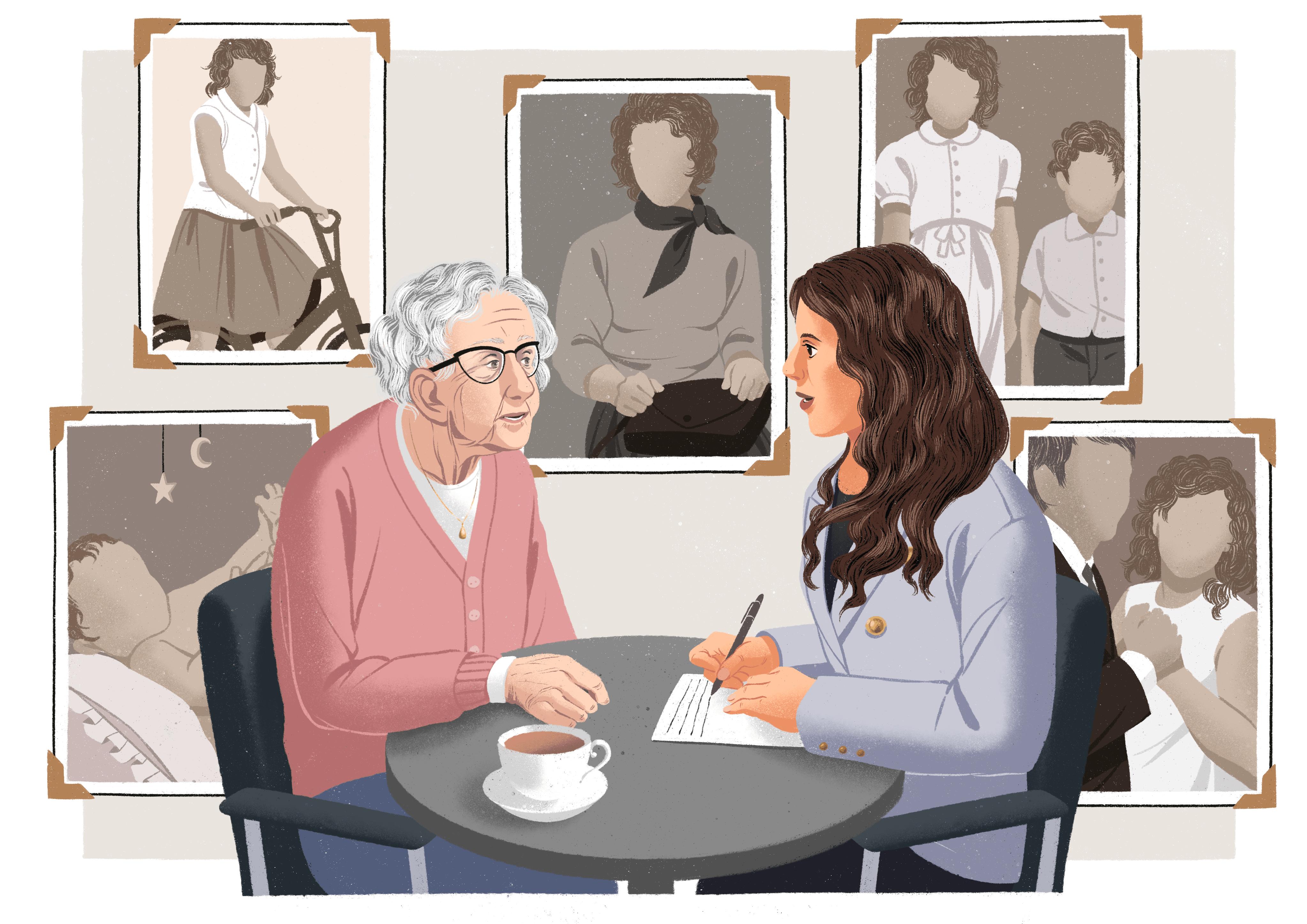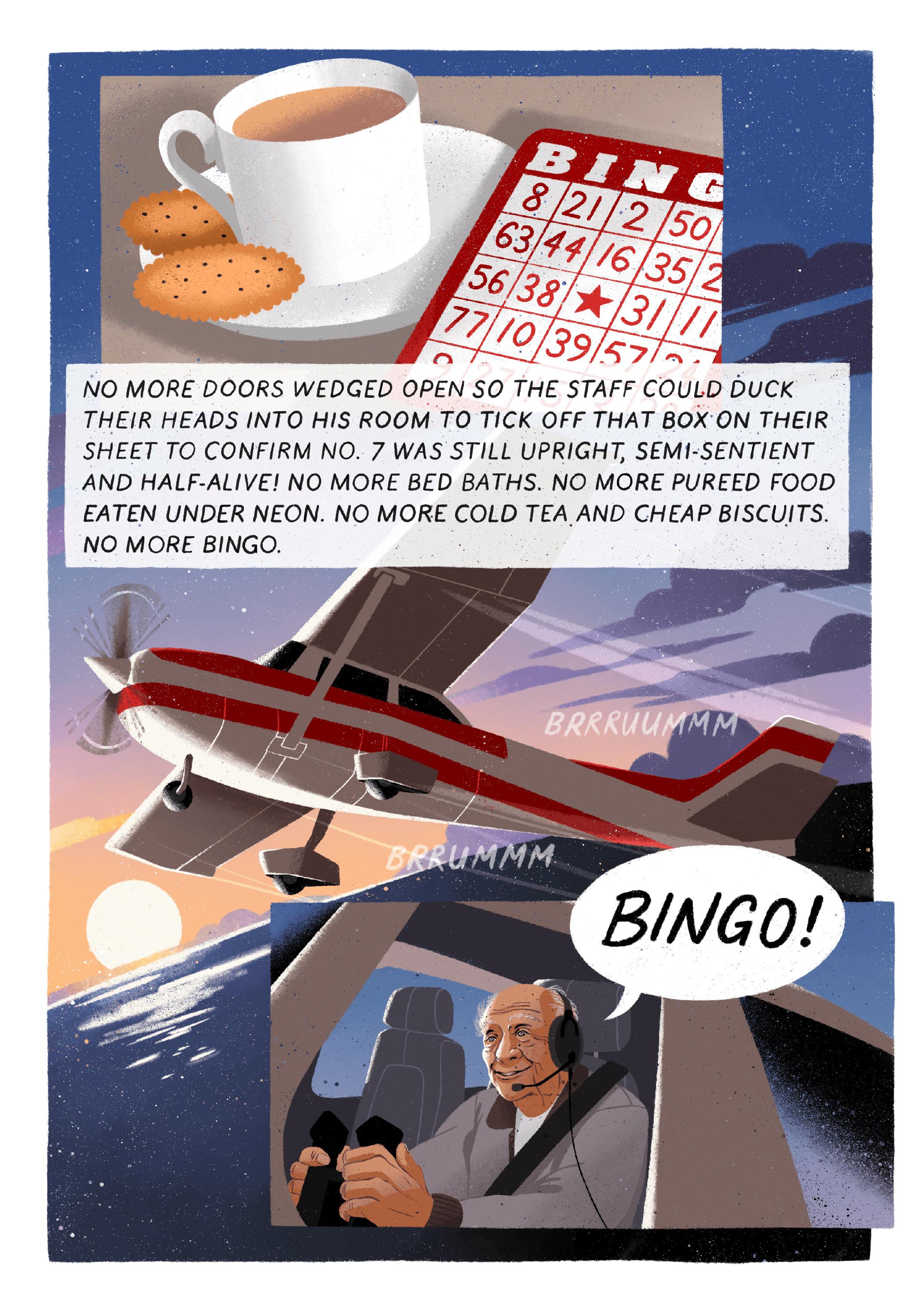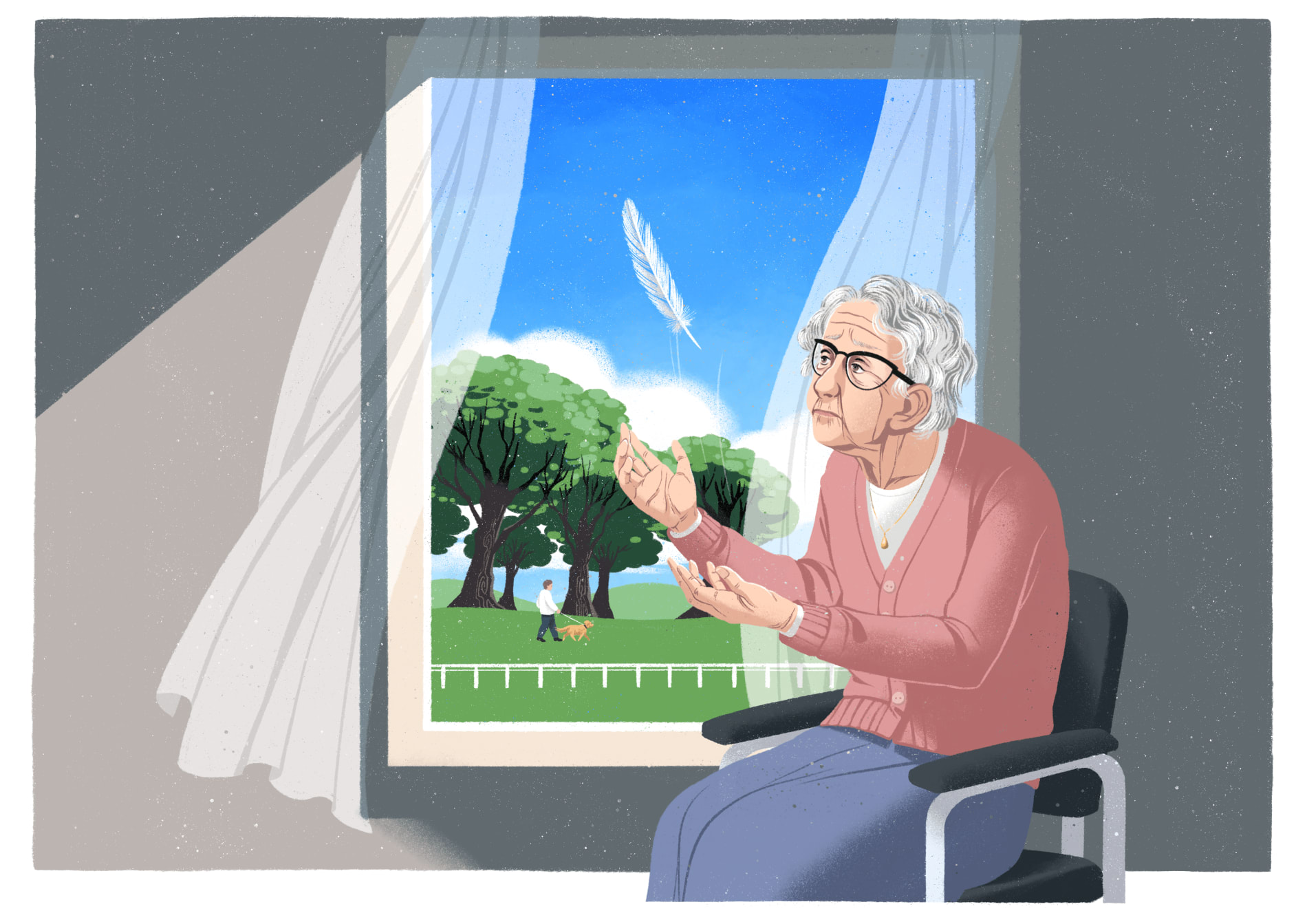Two years ago, Monash sociologist Dr Barbara Barbosa Neves and a group of researchers included an acclaimed Australian author as part of their team looking into loneliness among residents of Australian aged care homes.
The key question, with Miles Franklin winner Josephine Wilson on board, was: “How can we better understand and represent their complex voices and stories?”
Now, the unique research project is updated and extended, with illustrator-artist Amanda Brooks joining. The result, published by The Gerontologist journal, is sociological academia, but with creative non-fiction and comic book-style art.
“We give participants space and time to talk about what they feel, and how they see the world,” says Dr Neves.
The first paper two years ago focused on a sociological technique called “crystallisation” – “a multi-genre approach to study and present social phenomena” examining the “ethics of representation, which is critical when engaging with vulnerable populations” to “deepen the understanding of a topic by analysing and describing it in different forms, while resisting conventions regarding how findings should be presented”.
Read more: How storytelling is helping us better understand ageing and loneliness
The technique was first described by US sociologists Laurel Richardson and Laura Ellingson in the 1990s while exploring ideas of merging personal narratives with research. The method also asks for reflection on researchers’ roles, and how participants’ voices are represented.
Dr Neves wrote about this “crystallisation” phase of the research for Lens, citing global estimates between 35% to 61% of older people in aged care feeling lonely, a considerably higher figure than for those living in the community, and reports of more than 40% of aged care residents in Australia not getting any visitors – before the pandemic.
The writer Josephine Wilson became co-author after immersing herself in interviews with aged care residents feeling lonely, and going through transcripts and field notes to write about two participants’ experiences using their stories, plus her own imagination.

Illustrating loneliness
The new paper has the added element of the illustrations; Amanda Brooks immersed herself in the same manner for her illustrations through, the paper explains, “creative exploration” and “sociological narratives” from the original 101 hours of ethnographic observation in two aged care homes, with interviews of 22 residents aged between 65 and 95, exploring their experience and understanding of loneliness, and how they address it.
“The new paper pushes it forward with the illustrations and a more overarching examination of how arts and science collaborations can be not only a fruitful method, but a scientific practice and procedure,” says Dr Neves.
The concept of “live gerontology” is based on University of Glasgow Professor Les Back’s idea, from 2012, of “live sociology” – “the fleeting, distributed, multiple and sensory aspects of sociality through research techniques that are mobile, sensuous and operate from multiple vantage points”.
Read more: Un-neighbourly? Fear of crime among older people points to social isolation
The Monash-led research used three main themes – loneliness, institutionalisation and ageing – and the paper describes “live gerontology” as a “broad” process based on Professor Back’s work that connects “scientific, artistic and humanist genres to better understand and represent ageing and its various meanings and contexts”.
The same two aged care residents who had their stories reimagined for the first paper – “Gurney” and “Patricia” – are now illustrated, and revisited. Gurney (a pseudonym), who is 90, originally confessed he felt lonely all day – but joked it was “no more than once a day”.
He’s a former hospital warden who loves aircraft and flight, but reserves a special disdain for bingo. Patricia (also a pseudonym), 79, worked in a factory, married a “wonderful man”, had four children, and went ballroom dancing. The paper describes her aged care days looking at a row of trees out her window.
“The trees represented a constant presence for her,” says Dr Neves. “The aged care facility wanted to move her to a better room, but she said, ‘No, because I need this view, I can’t see the trees from the other unit.’”
A different approach to gerontology
Dr Neves says gerontology frequently comes with a “very dominant biomedical understanding of growing old”, whereas social sciences can look at social and cultural dimensions “to understand ageing beyond ‘biological decline’”.
“Our purpose with this work was to unsettle that very dominant understanding and bring different ways of thinking about the senses. A lot of the work in gerontology is about sensorial decline. We wanted to bring a different way of thinking. How can we use the senses through artistic collaborations to really understand not just what people say and what they report, but what they feel, what they sense, what they perform? How do they inhabit this social world?”
Both Gurney and Patricia – and others in the project – talked about ageism and stereotypes, and the lack of those around them taking their point of view seriously.
Both felt isolated, and both offered what the researchers call “micro forms of resistance”, such as refusing bingo or smuggling a private kettle into their room, and both often used their imaginations, as reflected in the stories and drawings.
Revealing the subtleties
The sociological concepts in both papers hold that these drawings and stories can contain subtleties and moods not often apparent in drier research. For example, Wilson had Gurney waking from a troubled dream to find himself flying a Cessna, in control, climbing in altitude.
She depicted Patricia as someone being finally asked for her thoughts (by Dr Neves), remembering her younger days, talking about what it means to be called “frail”, and what it means to have one view of the trees, and wondering why no one ever knocks on her door before coming in.
The stories, rather than just documenting the facts of their lives and treating loneliness as the same thing for all people, emphasise the “personal contexts” of the aged care residents. Gurney’s sense of humour emerged, as did Patricia’s description of loneliness as “dead silent”.

“They had no fear of being judged by us, because we created a safe and positive space,” says Dr Neves. “Most of our participants do not tell their family or friends that they’re lonely because of the stigma of loneliness, and because they already feel that they're so dependent, this just brings another layer of personal failure.
“This kind of research is a space of comfort in a way, because they can talk about it. And they all usually at the end say, ‘I hope this is useful for other lonely older people’.”





